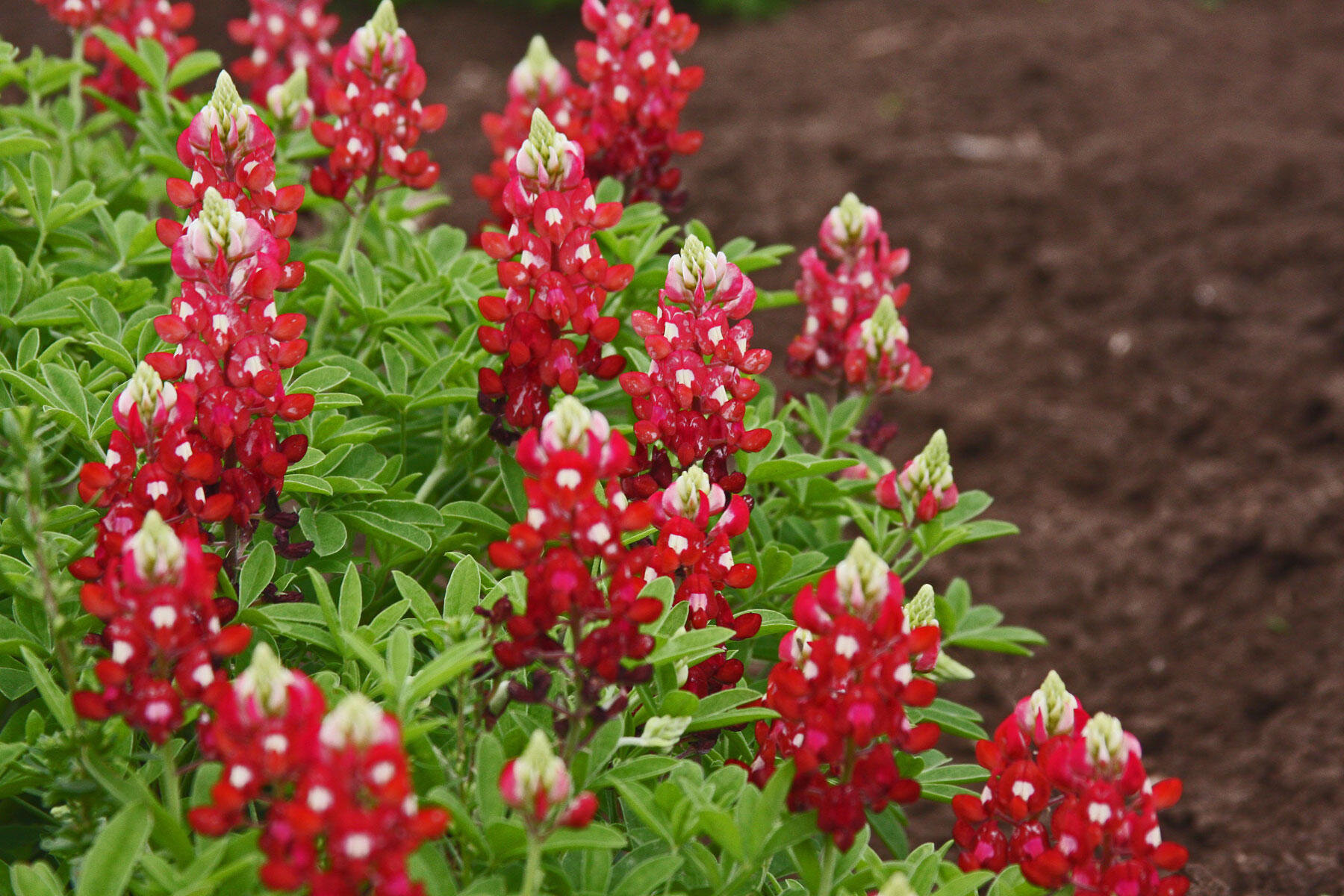Lupinus texensis, Texas Bluebonnet
/By: Jack Zuber
Vast field of bluebonnets, courtesy of Getty images
Bluebonnet inflorescence, courtesy of David R. Tribble
Texas bluebonnet (Lupinus texensis) is a commonly planted biennial flowering plant. A true Texas native the Texas bluebonnet is the official state flower of Texas which was designated in 1901 by the Texas legislature which specified Lupinus subcarnosus,, and was amended in 1971 to include L. texensisL. havardii, L. concinnus, L. perennis, and L. plattensis.(Andrews, 1986) . Another common name for the Texas bluebonnet is Texas lupine, as it is a member of the Lupinus genus which is native to Texas and northern Mexico. Bluebonnets can often be seen planted in garden landscapes all over the state as well as growing along the side of the many highways of Texas blooming a brilliant blue color from the months of March to May, and often as late in the year as June. During its bloom, oceans of blue can be seen throughout the Texas hill country and surrounding areas which make a great place for family pictures to be taken like a true Texan.
The native range of the Texas bluebonnet is western Louisiana all the way to western Texas, and it also occurs in certain parts of Oklahoma and Mexico. The species is specifically prevalent in the Blackland prairie and Edwards plateau ecoregions of the state, but it can be found all over its native range. Texas bluebonnets are small herbaceous plants standing anywhere from 1–3 feet in height. As a member of the Fabaceae family, Texas bluebonnets produce small seed pods containing 3-6 seeds per pod. The seeds of Texas bluebonnets along with other members of the Lupinus genus are toxic to humans and animals. Bluebonnets are comprised of green, velvet-like leaves which are pinnately compound, and produce beautiful blue flowers in bunches during its flowering season, which makes them a very attractive plant to add to any landscape. Texas bluebonnets are endemic to USDA Hardiness zones 7–9 but can be planted in any climate if placed in a container. Horticulturally, the Texas bluebonnet is a popular choice for wildflower gardens, as well as in wildflower plantings in open fields.. Bluebonnets do well in planters and provide a nice accent color to a more southwestern/Texas-styled landscape. They are also an attractive option for a pollinator garden as bees and butterflies are attracted to the species. (LBJWC, N.D.)
‘Alamo fire’ bluebonnets, courtesy of Jerry Parsons
There are many cultivars of bluebonnets including ‘Alamo Fire’ which is a cultivar that has a deep maroon color and is a popular planted ornamental bluebonnet. There are also several native and natural variations of Texas bluebonnets ranging in colors of white, different blues, and even pink. There is a widely known rumor in the state of Texas that it is illegal to pick bluebonnets. This rumor, however, is just a myth; while it is illegal to destroy any plants in Texas state parks per Texas Parks and Wildlife’s rules, there is no specified law on picking the state flower of Texas. Texas bluebonnets provide a brilliant pop of color to any “Texas themed” native landscape and allow horticulturalists to show their state pride by growing the official flower of The State of Texas.
Texas hill country Bluebonnet painting by an Unknown artist circa 1930s
Andrews, J. (1986). Bluebonnet. Retrieved September 13, 2020, from https://www.tshaonline.org/handbook/entries/bluebonnet
Lady Bird Johnson Wildflower Center Plant Database. (n.d.). Retrieved September 13, 2020, from https://www.wildflower.org/plants/result.php?id_plant=lute






